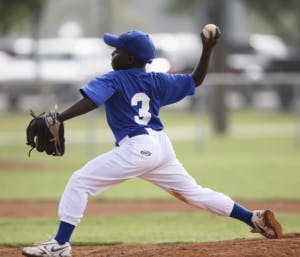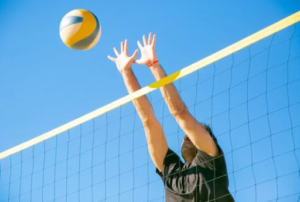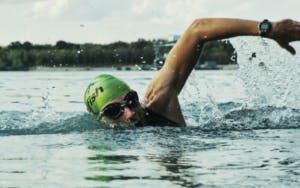
 With COVID restrictions easing, people are returning to their favorite sports with enthusiasm and sometimes wild abandon. The tennis players are competing with the pickle ball players for access to courts. Surfing breaks are crowded, hiking trails and national parks are packed with people. There are lines of cars waiting for parking at many gyms, sports fields, and beach parks.
With COVID restrictions easing, people are returning to their favorite sports with enthusiasm and sometimes wild abandon. The tennis players are competing with the pickle ball players for access to courts. Surfing breaks are crowded, hiking trails and national parks are packed with people. There are lines of cars waiting for parking at many gyms, sports fields, and beach parks.
Have you returned to your favorite athletic activities? It may be tempting to dive back into canoe paddling 3 or 4 times per week, or to sign up for yoga, barre, and zumba classes all at once. If you haven’t been paddling, hiking, or zumba’ing all year you may be setting yourself up for overuse injuries. Your muscles, bones, tendons, and ligaments are no longer adapted to those sports. In another article I talked about things to consider when returning to your workouts. We also discussed ways to prepare the body for a return to sport. Now we will look at some specific overuse injuries to be aware of so that you don’t end up sidelined, injured, or worse.
Tennis, Golfer’s, Pitcher’s Elbow – these injuries are well known and related to those sports specifically, however you can get lateral or medial elbow epicondylitis from a variety of repetitive activities. Anything that involves gripping and twisting the forearm, if done in excess, can lead to pain and weakness that will stop your arm from functioning. If you have pain in the inner or outer elbow that just won’t go away, get in to see your PT for a full evaluation. 
Surfer’s Myelopathy – this scary injury causes paralysis below the waist due to prolonged positioning in an extended spine (back bent) position. Although very rare, surfers and sometimes gymnasts or yoga students will get this injury that blocks blood flow to the spinal cord. If you feel back pain while doing these activities, stop immediately and seek medical attention. This form of paralysis is often but not always curable. 
Runner’s Knee – another very common complaint is knee pain while running. There are many things that can cause knee pain including weakness, poor running form, osteoarthritis, running too fast or too long, progressing too quickly, and so on. Also known as patellofemoral pain syndrome, runner’s knee can stop you from running entirely. If you feel pain around the kneecap, grinding, clicking or popping while running, have a PT evaluate your knee before the pain becomes disabling. 

Jumper’s Knee – the knee absorbs impact in many jumping sports such as basketball, skateboarding, and volleyball. Patellar tendonitis (or tendonopathy) involves pain and inflammation in the patellar tendon which attaches your kneecap to your shin bone. If you feel pain just below the kneecap with bending/straightening the knee, jumping, jogging, or walking it’s best to figure out the cause before you tear the tendon completely.
Whiplash – this neck injury is often seen in car accidents where the head and neck is forcefully whipped back and forth or to the side. This can also occur in contact sports such as football, soccer, and wrestling. Not as well known is the fact that severe whiplash can coincide with concussions when the brain is also whipped back and forth inside the skull, causing brain injuries. Seek medical attention immediately if you suspect a neck or brain injury. Any loss of consciousness, slurred speech, foggy thinking, severe neck pain, or visual disturbances can indicate a medical emergency.
Swimmer’s Shoulder – this impingement of the shoulder joint is caused by too much compression to rotator cuff tendons and other soft tissue in the front of the shoulder. This condition affects not only swimmers but is commonly seen in office workers who spend hours in front of a computer, using phones, and tablets. It can eventually lead to full tears of the rotator cuff or biceps tendon and should not be ignored. 
Bowler’s Thumb – okay this is not a common or well-known injury unless you bowl frequently as one might for competition. It’s characterized by numbness and weakness in the thumb due to compression and friction to the ulnar nerve where the thumb inserts into the hole of the ball. The point here is that any activity taken to excess can lead to overuse injuries which may stop you from participating in your favorite sport.
Seriously, this list of overuse sports injuries could go on and on. The key take away is to realize that pain is a signal. Your body is telling you something’s not right and if you continue to ignore it, you’ll most likely end up with a serious injury.
What You Can Do
At the first sign of pain, stop to evaluate what might be the cause.
Did you jump off your skateboard and land in a weird position? Did you try hiking Kokohead stairs after a year layoff? Did you sign up for mixed martial arts classes despite having not exercised in decades? Did you increase your running frequency, duration, or speed without gradually building up? If you aren’t sure, you may need some professional help from a coach or personal trainer with a background in exercise science.
Ice is your friend! For most painful conditions ice can decrease inflammation and swelling. Massage a chunk of ice on the area for 3 minutes or until the skin is numb to the touch. Old yogurt cups filled with water make a nice sized chunk of ice. Hold the ice in a towel to collect the drips. If you can’t tolerate ice, consider gentle massage of the tissue in the direction towards the heart.
Rest until the pain goes away. If you’re taking pain medication, that doesn’t count! If after 2-3 days you still have pain it may be time to get the injury examined. You can start with your primary care physician or an MD at an urgent care clinic. If your health insurance allows direct access to physical therapy, you can call your favorite PT clinic and set up an appointment for an evaluation. You can pay for PT services out of pocket if you wish. At OrthoSport Hawaii, we also offer same-day free consults to help you decide if the injury needs medical attention, without the need to schedule a full one hour evaluation. We can also consult with you over the phone or via our Telehealth portal.
Don’t allow overuse injuries to ruin your fun as you get back into the swing of sports, fitness, and recreation. We’re here to help you get fit or recover from over-doing it. Call 808.373.3555 for more information on our services. See you out there!
